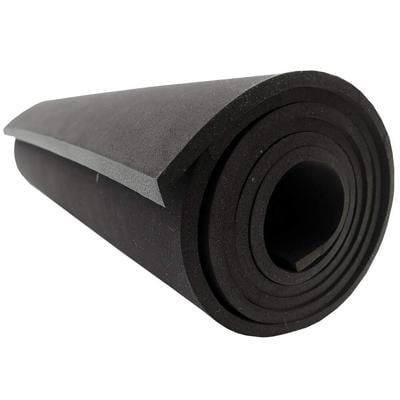The marine environment is unforgiving. Constant exposure to saltwater, UV rays, chemicals, and extreme temperature variations creates a highly corrosive and damaging setting for most materials. Over the years, neoprene rubber sheets have proven to be one of the most reliable solutions in such conditions. Their unique properties make them highly suitable for marine applications, from boat insulation and protective seals to underwater components. Here's why neoprene rubber sheets are the go-to choice in aquatic environments.

Superior Resistance to Water and Saltwater
One of neoprene's most essential characteristics in marine use is its exceptional water resistance. Thanks to its closed-cell structure, neoprene does not readily absorb water, making it highly effective at maintaining performance even in wet environments. Additionally, it resists saltwater corrosion—a critical advantage, as salt water is far more damaging than fresh water. This property ensures neoprene remains durable and intact for extended periods, especially in components like seals, gaskets, and flotation devices used on boats and docks.
Excellent Durability Against Chemicals and Oils
Marine operations frequently involve exposure to fuels, lubricants, and cleaning agents. Neoprene rubber resists degradation from these substances better than many other materials. This chemical resistance makes neoprene ideal for engine room linings, fuel system seals, and pump gaskets. Even when exposed to diesel, gasoline, or hydraulic fluids, neoprene retains its integrity, helping to prevent leaks and system failures in marine environments.
Resistance to UV Radiation and Ozone
Sunlight and ozone exposure can quickly wear down materials used in outdoor or surface-level marine applications. Neoprene, however, is naturally resistant to UV rays and ozone, which helps it maintain flexibility and performance over time. This makes it an excellent choice for boat deck padding, hatch seals, and protective wraps for cables and wires exposed to the elements. Neoprene's resistance to these atmospheric conditions translates to a longer lifespan and fewer replacements, which is crucial in minimizing maintenance costs.
Thermal Insulation and Temperature Resistance
Neoprene offers good thermal stability, maintaining flexibility across a wide temperature range. This makes it suitable for marine environments that experience both hot sun and cold waters. In addition, neoprene provides effective thermal insulation, which is why it's used in wetsuits, pipe insulation, and electronic component protection on ships. Its ability to perform under varying thermal conditions ensures safety and operational efficiency at sea.
Vibration and Shock Absorption
Boats, ships, and other marine machinery generate constant vibrations that can damage equipment over time. Neoprene acts as a natural dampener, absorbing vibrations and reducing the impact on components. It's often used under marine engines, flooring systems, and structural joints to minimize mechanical stress. This protects the equipment and enhances comfort for crew and passengers by reducing noise and movement.
Multipurpose Applications Across Marine Settings
Neoprene rubber sheets are incredibly versatile. They serve as anti-slip flooring on boats, waterproof seals in hatches and portholes, protective padding on docks, and even insulating linings in wetsuits and diving gear. Their adaptability, combined with resistance to multiple environmental threats, makes neoprene a staple material in commercial shipping, recreational boating, underwater construction, and more.
Neoprene rubber sheets have carved a niche in the marine industry for good reason. They offer a rare balance of strength, flexibility, chemical resistance, and environmental durability. Whether it's enduring the corrosive effects of saltwater, resisting the breakdown caused by fuel and oils, or providing insulation and vibration damping, neoprene rises to the challenge. Its reliability and versatility make it a must-have material in any marine application—ensuring safety, efficiency, and longevity on the water.


(0) comments
We welcome your comments
Log In
Post a comment as Guest
Keep it Clean. Please avoid obscene, vulgar, lewd, racist or sexually-oriented language.
PLEASE TURN OFF YOUR CAPS LOCK.
Don't Threaten. Threats of harming another person will not be tolerated.
Be Truthful. Don't knowingly lie about anyone or anything.
Be Nice. No racism, sexism or any sort of -ism that is degrading to another person.
Be Proactive. Use the 'Report' link on each comment to let us know of abusive posts.
Share with Us. We'd love to hear eyewitness accounts, the history behind an article.